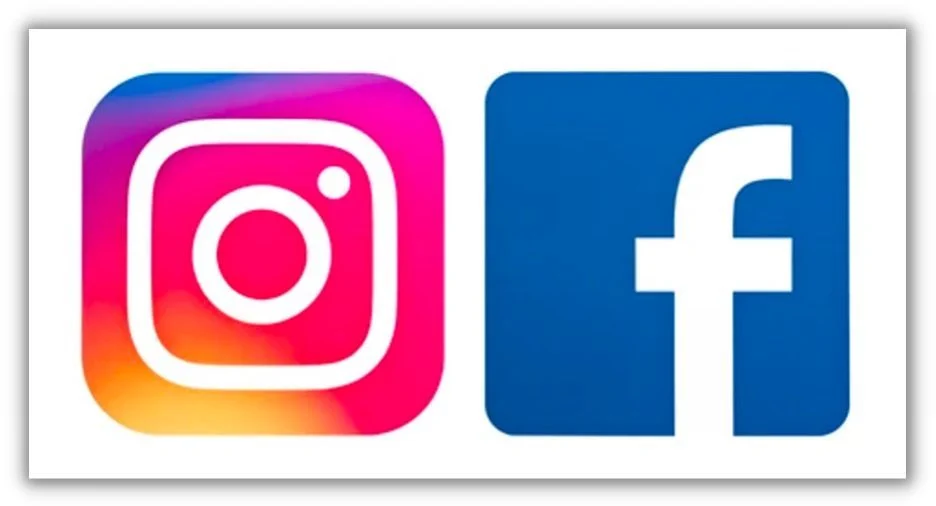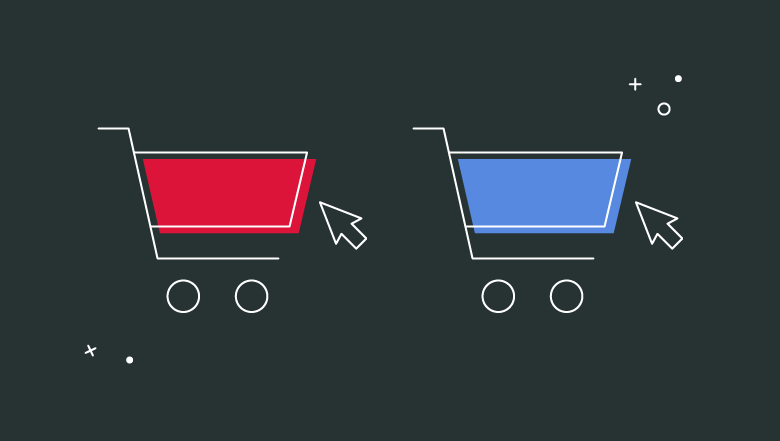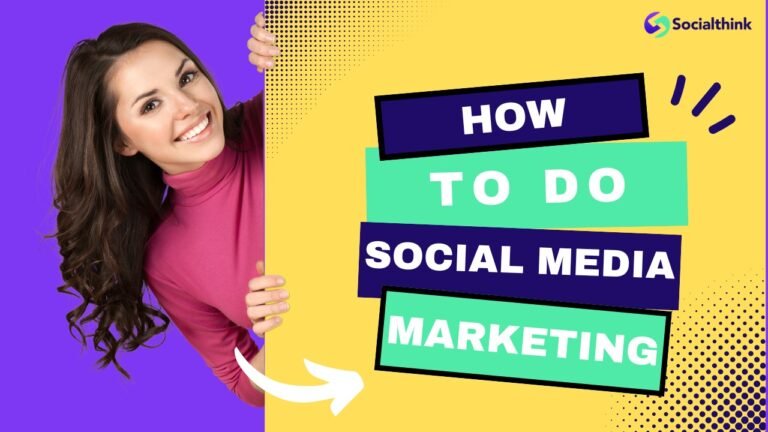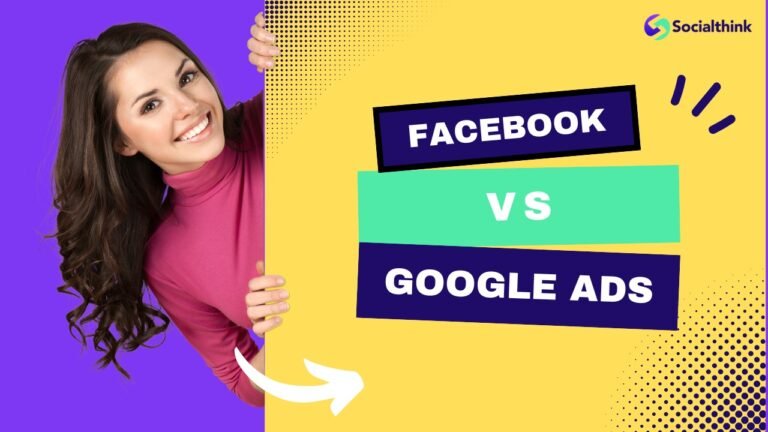Facebook vs Instagram Users: A Comparative Analysis
In the ever-evolving social media landscape, marketers face the important question: which platform will deliver the best ROI for their business?
Facebook and Instagram, both owned by parent company Meta, are two social media giants that offer robust opportunities for brands to connect with their target audience.
But with distinct user bases, features, and engagement patterns, understanding the differences between Facebook and Instagram is key to creating an effective social media strategy.
At Social Think, we specialize in leveraging social media analytics and insights to help businesses achieve their goals.
In this article, we’ll dive deep into the Facebook vs Instagram debate, examining each platform’s unique strengths and analyzing what the latest data tells us about their users.
Armed with this knowledge, you’ll be well-equipped to determine where to focus your marketing efforts for maximum impact.
Instagram vs. Facebook: Background

Facebook, launched in 2004, has long been the dominant social network. With over 2.9 billion monthly active users, its user base spans a wide range of demographics. The platform’s emphasis on link sharing, text posts, and private Groups fosters community and conversation.
Instagram, acquired by Facebook in 2012, has skyrocketed to 1.4 billion monthly active users on the strength of its highly visual, mobile-first experience. With a focus on photos, videos, Stories, and Reels, Instagram has become the go-to platform for influencers, creators, and brands who rely on visual storytelling.
Instagram vs. Facebook: Features and Functionality

Instagram Features
Instagram’s signature features are all about enabling creative, engaging visual content, including:
- Feed posts: square-format photos/videos
- Instagram Stories: ephemeral full-screen content
- Reels: short-form video clips
- IGTV: long-form video
- Instagram Live: livestreaming video
- Instagram Shopping: tag and sell products directly in posts
Facebook Features
Facebook offers a wider range of content formats and functionality for its massive user base:
- Feed posts: text, photos, videos of any aspect ratio
- Facebook Stories
- Facebook Watch: long-form video platform
- Facebook Live
- Facebook Marketplace: buy/sell goods
- Facebook Groups: community forums
- Facebook Events: promote/attend events
- Facebook Gaming: livestream gaming content
Instagram vs. Facebook By The Numbers

Facebook Statistics
- 2.9 billion monthly active social media users
- 1.96 billion daily active users
- Over 200 million businesses use Facebook tools
- 17.6% average engagement rate per Facebook post
Instagram Statistics
- 1.4 billion monthly active users
- 500 million daily active Stories users
- 130 million users tap on shopping posts every month
- 0.83% median engagement rate per post
Instagram vs. Facebook: Audiences

Number of Users
While both platforms have huge user bases, Facebook still dominates in sheer numbers with 2.9 billion monthly active users compared to Instagram’s 1.4 billion. However, Instagram is growing faster, especially among younger users.
Age and Gender Identity of Users
Facebook has a more even spread of age groups, with users from 18 up to 65+. Instagram skews much younger, with over 60% of users under 35.
In terms of gender, Facebook is fairly evenly split between male and female users. Instagram has slightly more female users overall.
Location of Users
India, the United States, and Indonesia are the top 3 countries for Facebook users. For Instagram, it’s the United States, India, and Brazil. Instagram is generally more popular in western countries compared to Facebook.
Instagram vs. Facebook: Engagement

Types of Engagement
Engagement looks quite different between the two platforms:
On Facebook, the most common engagement types are reactions (likes), comments, and shares. There’s also engagement with Facebook-native experiences like Events and Marketplace.
On Instagram, engagement centers on likes, comments, and shares to Stories. Saves are also a significant engagement metric. Features like polls and questions in Stories drive tons of interaction.
Engagement Benchmarks
Facebook’s average engagement rate per post is much higher at 17.6% vs Instagram’s 0.83% median. However, this varies widely by industry and content type.
Time Spent on Instagram Vs. Facebook
Instagram users spend an average of 30 minutes per day on the app. Facebook users spend an average of 33 minutes per day. So while Facebook has more total users, Instagram users are almost as engaged in terms of time spent.
Instagram vs. Facebook: Content

Types of Content
The content that works best on each platform aligns with its core features and user behaviors:
Top content types on Facebook:
- Text posts/status updates
- Link posts (articles, blog posts)
- Video (long and short)
- Live video
- Events
Top content types on Instagram:
- High-quality photos
- Short-form video (Reels)
- Stories
- Carousels (multiple photos/videos in a post)
- Shoppable posts
Instagram vs. Facebook: Industries

Industries on Instagram
Instagram is an ideal platform for brands and industries that are visually-oriented:
- Fashion/apparel
- Beauty
- Travel/tourism
- Food/restaurants
- Health/wellness
- Home decor
- Art/design
- Real Estate
Industries on Facebook
With its diverse user base, Facebook audience accommodates a wider variety of industries, including:
- News/media
- Retail/ecommerce
- Entertainment
- Nonprofits/causes
- Education
- Financial services
- Healthcare
- Real Estate
Business Types on Instagram and Facebook

Small businesses and entrepreneurs, especially those selling physical products, tend to gravitate towards Instagram for its shopping features, digital marketing ease and visual focus. It is also like a second home to younger people.
Facebook is popular among local businesses of all sizes that want to foster community connections. Many larger brands and B2B companies also use Facebook to share thought leadership content and drive traffic to their websites.
Instagram vs. Facebook: Paid Advertising

Both platforms offer robust targeting options and multiple ad formats.
However, there are some key differences:
Instagram Ads
- Emphasis on ads in Stories, Reels, and the Explore page
- Shoppable ads are very effective
- Sponsored posts from influencers are popular
- Ideal for building brand awareness with younger audiences
Facebook Ads
- Highly customizable ad targeting based on user data
- Retargeting using the Facebook pixel
- Instant Experiences (interactive ads)
- Best for driving website traffic and lead generation
What Are the Advantages of Facebook Over Instagram?
- Massive, global user base
- Ability to include links in posts
- Robust ad targeting and conversion tracking
- Best for driving traffic and leads
Does Facebook Satisfy All Your Needs?

While Facebook is a powerful platform, diversifying your social strategy across multiple channels, including Instagram, allows you to connect with distinct audiences and achieve different marketing goals. Relying solely on Facebook may limit your brand’s reach and impact.
What Are the Advantages of Instagram Over Facebook?
- Highly engaged user base, especially millennials and Gen Z
- Visual format is ideal for showcasing products/services
- High organic reach potential
- Powerful influencer marketing platform
Why Not Use Both Social Media Platforms?
Leveraging both Instagram and Facebook allows you to tap into each platform’s unique strengths:
- Expand your reach to different age groups
- Repurpose content across platforms
- Take advantage of each platform’s ad targeting capabilities
- Foster community on Facebook and build brand awareness on Instagram
Difference Between Facebook and Instagram For Marketing
- Instagram is best for visual marketing and reaching younger audiences
- Facebook offers more advanced ad targeting and conversion tracking
- Instagram drives more engagement, while Facebook drives more website traffic
Difference Between Facebook and Instagram For Business
- Small, product-based businesses thrive on Instagram
- Facebook is better for local businesses and larger brands
- B2B companies tend to prefer Facebook for thought leadership content
Verdict of Facebook Vs. Instagram

How is Instagram Different From Facebook?
Instagram is more visual, mobile-centric, and popular with younger users. Facebook offers a broader range of content formats and appeals to a wider age range.
What Are the Most Popular Social Media Platforms?
Facebook and Instagram are both among the top 5 most popular social platforms globally, along with YouTube, WhatsApp, and WeChat.
What is the Number 1 Social Media?
Facebook remains the world’s most widely used social platform, followed by YouTube and WhatsApp.
Which is Better, FB or Instagram?
The best platform depends on your specific business goals and target audience. Many brands find success using Facebook and Instagram in tandem.
Which is Safer, Facebook or Instagram?
Both platforms have had challenges with privacy and data security. Instagram is generally considered more trustworthy by younger users.
Does Facebook Automatically Link With Instagram?
While Facebook owns Instagram, they are separate platforms. However, you can choose to link your Facebook and Instagram business accounts to cross-post content and access unified insights.
FAQ’s:
Which Platform Has a Younger User Base, Instagram or Facebook?
Instagram has a significantly younger user base than Facebook. Over 60% of Instagram users are under 35, compared to Facebook’s more even age distribution.
How Do Geographic Locations Affect Content Strategy on Both Platforms?
Brands should tailor their content to the cultural preferences and languages of their top user locations on each platform. Instagram is more popular in western countries, while Facebook has a large user base in Asia.
Can Businesses Target Older Demographics Effectively on Instagram?
While Instagram’s core user base is younger, the platform’s growing popularity means there are still significant numbers of older users. Brands can use age-targeted ads to reach these demographics on Instagram.
What Future Demographic Trends Should Marketers Anticipate?
As Instagram’s user base ages up, the platform may become more popular with older users. Brands should also watch the rise of Gen Z and their preferences for short-form video content.
Do People Use Instagram More Than Facebook Now?
In terms of time spent per user, Instagram is catching up to Facebook. However, Facebook still has significantly more total users globally. Both platforms cater different purposes and and type of content.
Is Instagram Overtaking Facebook?
Instagram is growing faster than Facebook, especially among younger generation. However, Facebook’s massive user base means it will likely remain the larger platform for the foreseeable future.
What Are the Primary Reasons Why Users Prefer Either Facebook or Instagram As Their Social Media Platform of Choice?
Users tend to prefer Instagram for its simplicity, visual focus, and trendy content. Facebook appeals to users who want a broader range of content types and more in-depth interaction with friends and communities.
Conclusion
As this data shows, the Facebook vs Instagram debate is nuanced.
Both platforms offer immense value for brands, but the right strategy depends on your unique goals and audience.
For visually-oriented brands targeting younger users, Instagram’s active user base and shopping features make it a clear winner.
Meanwhile, Facebook remains a powerhouse for driving website traffic, generating leads, and building community around your brand.
Ultimately, a diversified approach that leverages each platform’s strengths will be most effective.
Understanding the key differences between Facebook and Instagram users, can help you create content and ad campaigns that resonate with your target audience on your preferred social media networks platform.
Ready to put these insights into action and optimize your social media marketing strategy? Get in touch with the experts at Social Think.
We’ll help you leverage social media analytics to reach the right users on the right platforms and achieve your business goals with the right social media presence.







